"American" Eastern Front
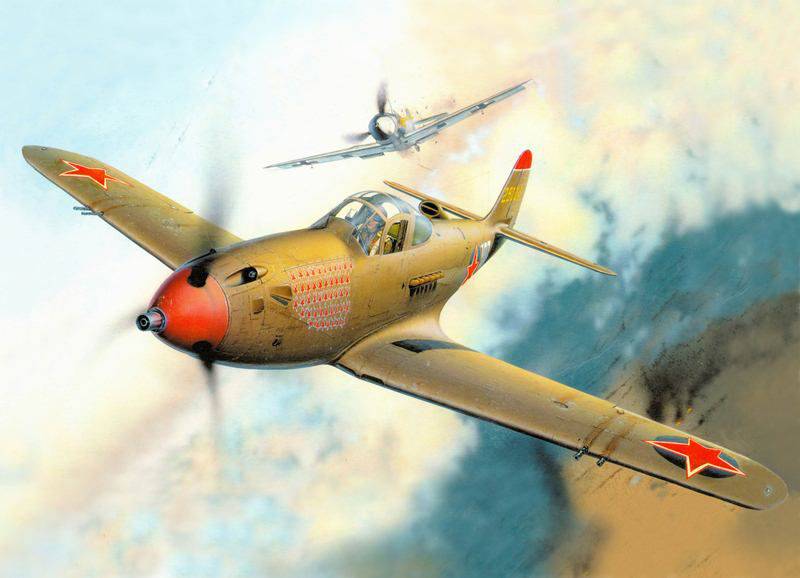
The P-39 Aero Cobra is the most "Russified" Lend-Lease aircraft. Almost 5000 of these fighters were sent to the Soviet Union, which accounted for more than half of all aircraft of this type, or more than a third of all American aircraft transferred to us during the war.
The reason for this is that for the battles on the Western Front and in the Pacific Ocean, the R-39 fighters were little adapted. This probably explains the fact that most of the “thirty-ninths” were transferred without special pity to the Bolshevik Soviet Union. And the USSR only benefited from this. “Cobra” was successfully suited for the conditions of the Soviet-German front, where the main determining force was the ground forces, which fought decisive battles of the Second World War on the entire giant stretch of the eastern front. Air battles aviation led, as a rule, at small and medium altitudes up to 5000 meters. Here, an American fighter (speed 585 km / h at an altitude of 4200 m) could demonstrate its best qualities - ease of control, good acceleration performance and survivability. But first of all - weapons, under which the unusual design of the aircraft was developed by the young and slightly adventurous Larry Bell and Robert Woods.
The best advertisement for this fighter was made by pilot Alexander Pokryshkin, the future air marshal and three times Hero of the Soviet Union. Having retrained in the 1943 year from the MiG-3 to the Aerocobra, Pokryshkin scored the most part of his 59 air victories on her.
The P-39 became the second Bell fighter established in 1935 as a result of the separation from Consolidated. Lawrence Bell, who had previously been the vice president of Consolidated, became its founder and head. Initially, engineers and workers "Bella" engaged in the release of parts for the flying boat "Catalina". And the first serious task of the new company was the development of the XFM-1 “Aerocud” fighter. They built 13 experienced "Aerokud" YFM-1, but the military refused to mass production of an unusual aircraft.
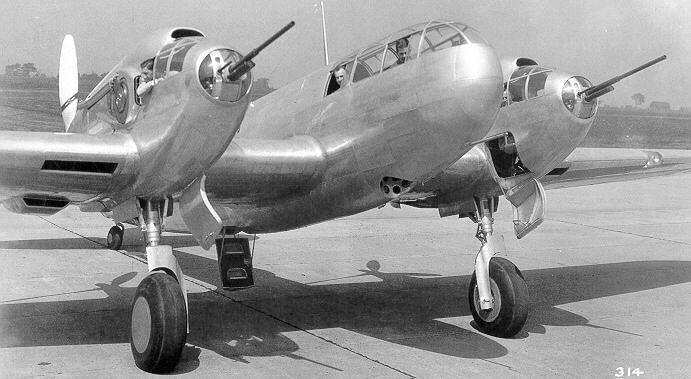
In 1936, under the leadership of designer Robert Woods and Garland Poyer, work began on a multipurpose single-seat all-metal fighter, the main armament of which was to be the 37-mm gun. For convenient placement and maintenance weapons engineers have proposed the original layout. The engine was placed behind the cockpit, the shaft passed under the floor and through the gearbox set in motion the screw. A cannon was placed in the free bow, which went out through the barrel of the propeller. Above the gun was a pair of large-caliber (12,7 mm) synchronous machine guns.

The pilot was located in a spacious cabin, entering it through a side door, as if by car. The aircraft received a new chassis scheme with a nose front wheel, providing better visibility on takeoff and landing. The main landing gear was hydraulically cleaned in the lower part of the wing, and the front - in a special compartment under the gun. The fighter was installed 12-cylinder V-shaped engine of liquid cooling "Allison" V-1710-17 with HP 1150 power. with a turbocharger.
After getting acquainted with the project, the command of the Aviation Corps in October 1937 of the year ordered the firm Bell to build a prototype, designated the XP-39 and its own name, Air Cobra. In April, test pilot Jimmy Tylor 1939, raised a new fighter from the Wright Field airfield.
On the experimental XP-39, the weapons were not installed, and the lighter plane behaved quite briskly in the air. The car gained altitude in 6100 m in five minutes, and the maximum speed reached 628 km / h. Such high data satisfied the military, and soon followed an order for 13 experienced VP-39.
The first prototype continued to fly, and on it, based on the test results, made a number of improvements. First of all, they abandoned the unreliable supercharger and installed the Y-1710-39 engine (1090 hp), which lowered the performance of the aircraft at high altitudes. The size of the car has also changed: the wing span has been reduced from 10,92 m to 10,37 m, and the total length of the aircraft has grown from 8,7 m to 9,07 m.
With modifications, the prototype received the XP-39В index and for the first time took off in October 1939 of the year, having a weight of 2930 kg. The fighter’s data got a little worse - 6100 minutes were now taking up the 7,5 m and the maximum speed at 4575 m was 603 km / h. Nevertheless, the YP-39, which is already under construction, also decided to abandon the unreliable supercharger, finding that with such characteristics the aircraft looks quite promising.
The first YP-1940B, which took off in September 39, differed from it in the V-1710-37 engine and the installed armament. The 37 caliber gun that fired through the bow of a propeller had an ammo of all 15 shells. Compared to the project, the machine guns were reinforced, and a pair of large-caliber (12,7 mm) barrels with 200 ammunition ammunition was added by two more machine guns of the 7,62 caliber mm with a set of 500 cartridges. Naturally, the take-off weight of the experienced Aero Cobra grew and reached 3285 kg.
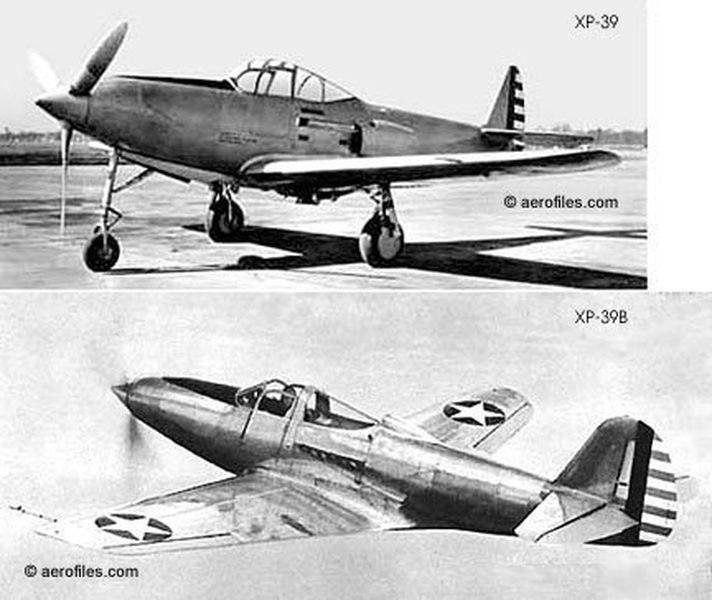
Sailors became interested in the new Bell aircraft. Back in November 1938, the fleet ordered the construction of a deck modification of the XP-39, which received a preliminary Model 5 index at the company. Paradoxically, the aviation command fleet skeptical of such an innovation as the layout of the chassis with the nose wheel. Therefore, the “deck”, on assignment, was supposed to have the usual scheme with a tail wheel and brake hook for landing on the deck.
With the engine XV-1710-6 (still just brought), the plane received an experimental "naval" index XFL-1 and the name "Aerobonite". Armament for the marine version of the Cobra has not changed. But on its first flight in May, 1940, the XFL-1 has so far left unarmed.
The main problem during the tests was the unreliable work of the test engine, therefore it was not until February 1941 of the year that the sea pilots began to seriously fly on the Aerobonite. In addition to the engine, there were problems with insufficient chassis strength, which called into question a safe landing on an aircraft carrier. By December 1941, the XFL-1 had to be returned to Buffalo for rework. And after the attack of the Japanese aircraft carriers on Pearl Harbor, the interest of the fleet command to the new car quickly faded.
The leadership of the US Army Aviation Corps was more supportive of the Bell fighter. Three weeks before Pearl Harbor, there was an order for the first batch of X-NUMX serial P-80C machines. Shipments began in January 39. Aircraft differed slightly from the YP-1941. All fuel tanks were made protected, and the number of machine guns increased by two barrels. Two 39-mm machine guns in the nose were removed, but now, under each plane, a pair of the same barrels, firing outside the propeller area, were installed. Of the aircraft ordered in 7,62, only 80 aircraft were P-20C. The remaining 39s received the P-60D index and differed in the ventral node for hanging the 39-kg bomb or fuel tank on the 227 l.
Soon, the US Air Force ordered an extra 923 P-39D. But even earlier, the Bell company offered its fighter to Great Britain and France. In April 1940, the British Commission signed a contract for the supply of new cars to England.
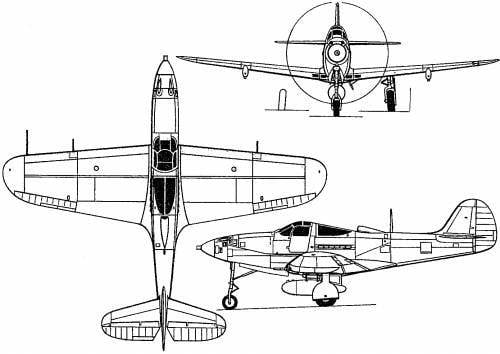
The Bell staff used every opportunity to make the Aercobra like the British. The fighter lightened by a ton (for this, almost all the equipment was removed), the surface of the airframe was polished and redrawed, which made it possible to reduce aerodynamic drag. After these tricks, the Americans, without being distraught, suggested to the allies to be convinced of the excellent flight data of their car - the lightweight fighter accelerated to 644 km / h and had a flight range to 1610 km. Americans have always been able to offer their goods without thinking about conscience and honesty. Naturally, when the serial copies of the P-39 arrived in England, their performance was much worse.
In August 1941, the first 11 fighters were delivered to the British Isles. In Norfolk, conducted operational tests of the "Air Cobra". The results disappointed the British. First of all, the speed of the serial car was lower on 50 km / h than indicated by Bell. Takeoff distance reached 686 m, and part of the runways, which exploited the Hurricane and Spitfire, became unsuitable for the work of the American fighter. When using weapons, a large amount of powder gases fell into the cabin. In addition, the return when firing almost immediately led to the failure of the gyrocompass, and the British pilots considered this drawback to be the most serious.
Four "Cobras" flew to Manston base to participate in combat operations. From here, the fighters performed an 4 departure for striking German ships off the coast of France. But due to the lack of the necessary number of spare parts and serious shortcomings discovered, already in November 1941, the British took the aircraft off their weapons. The purchase order for the remaining machines has been canceled.
The Soviet Union was saved from collapse by Bell. The assembly of export aircraft at the Bell plant in Buffalo was not stopped, since the Aircobra was offered a lend-lease by the USSR. In our country, the first cars arrived from the UK. Decommissioned aircraft in December 1941, the British offered the Red Army along with the Hurricane fighters. During 1942, the 212 Aerocobre allied convoys delivered to Murmansk and Arkhangelsk, losing their vehicles with sunk 54 vehicles.
Wary of the quality of incoming equipment from the Allies, the command of the Soviet Air Force conducted its own tests and fine-tuning of the American fighter for a whole year. When tested in the USSR, three experienced test pilots died. A significant role in fine-tuning the "Air Cobra" played the famous M.M. Gromov.
Not confirmed, as usual for American technology, many of the characteristics of the company. Suffer and reliability of overseas technology. Most often, combat pilots complained of engine failure. The reason was established easily - "Allison" refused to work on domestic grades of oil. After a more thorough filtration of the oils, the failures ceased. Longer had to tinker with another problem - at the limiting modes of engine operation, the connecting rods broke, punching the crankcase. After laboratory research and flight tests, the Air Force Research Institute issued recommendations to combatant pilots on the most favorable engine operating conditions. These activities have reduced the frequency of such accidents.
But the most serious and intractable "disease" "Air Cobra" has become a flat spin. After the shooting of the ammunition was completed, the alignment of the vehicle shifted back and provoked it from entering this mode. Finally, with a corkscrew managed to cope only on the later versions of the aircraft.
With the development of pilots P-39 increased the efficiency of their use. 15 June 1942, in the vicinity of the Murmashi airfield, six Cobras intercepted a German Bomber Bf-110 bomber force. In the 9 air battle, the Germans managed to shoot down, our pilots had no casualties.
Particularly dangerous was the service of the pilots of the Northern Fleet. Protecting convoys and ports from the air, the pilots in the event of an accident or damage doomed to almost death - the icy waters of the Barents Sea did not leave a chance to survive. The first in the fleet were the Aircobras of the pilots of the 2 Guards Iap, who, after the death of B.F. Safonov began to bear his name. The combat successes of the regiment are eloquently indicated by the fact that until the middle of 1943, all the komeski became Heroes of the Soviet Union. At that time, Heroes were assigned at least 10 downed German aircraft.
In 1941, Bell received an additional order from the USAF for 336 aircraft of the P-39D-1 version. In addition, most of the already ordered P-39D also completed the standard D-1. With a constant glider, engine and weapons significantly modified equipment and chassis. To reduce the weight reduced ammunition machine guns. The oxygen system was transferred to low pressure, because the non-standard high-pressure system was unreliable. In addition, any of the two oxygen cylinders could explode like a bomb from a stray bullet.
179 aircraft from unrealized English order in December 1941 of the year entered the US Air Force to counteract Japanese aircraft over the Pacific Ocean. At the beginning of 1942, the military situation in the region was tense, and the crews of the "thirty-ninths" waited for a difficult service. The Japanese almost everywhere had superiority at sea and in the air and, with their great combat experience, were considered a very serious adversary. And on the "Air Cobra" to intercept planes with red circles on the wings often rose "green" youth.
Japanese fighter "Zero" surpassed "Air Cobra" in almost all the main indicators - speed, climb and maneuverability. At the height of the difference in the "class" was felt even more acutely, and sometimes "Cobras" simply could not perform the interception. They didn’t add optimism to the pilots and frequent failures of 37-mm guns.
Due to the low, in the opinion of the Americans, the effectiveness of the "thirty-ninth" aircraft increasingly began to play the role of attack aircraft. It is in this capacity that the Air Cobra did a good job at Operation Torch - the landing of Anglo-American troops in North Africa. At the end of 1942, the Р-39 of two fighter groups of the USAF began to land at airfields in Morocco. Protecting the Allied convoys, the pilots of the same air groups participated in the landing of Sicily in July 1943. Especially for ground attack flights, the P-39D part was released in sub-versions D-3 and D-4. The aircraft were distinguished by armor protection of radiators and the installation of two cameras from the bottom of the fuselage. Thus, the Air Cobra mastered another profession - aerial reconnaissance.
In the 1942, Aero Cobra was transferred to another anti-Hitler coalition ally, Australia. In July, the 22 Fighter P-39D and P-39F (with a new propeller of the larger diameter Aeroproducts) were part of the Green Continent's Air Force. Five more cars flew in the next year. They were installed as a gun caliber 37 mm and 20-mm. Australians feared the landing of Japanese troops on the continent and carefully strengthened their army and aircraft. When, at the end of 1943, the threat of seizing the country was over, all the Cobras returned to the United States.
Portugal became another owner of Bell's aircraft. But in this case no contracts and agreements were signed. In December 1942, the American pilots overtook the Aero Cobra from England to North Africa. By mistake, the planes landed in Lisbon and neutral Portugal confiscated all the vehicles, introducing them into their air force.
The first truly mass modification was the P-39N, released in a series of 2095 aircraft. The P-39N was equipped with a V1710-85 engine (1200 hp) and the Aeroproducts propeller with the largest diameter among all Aero Cobras - 3,53 m. reinforced armor, hanging units for bombs and cameras.
But the most massive was the modification of the P-39Q - 4905 machines were rolled out of the shops in Buffalo. With the same propeller set-up as on the P-39N, the new Cobra changed the rifle arsenal. Arms in the nose remained unchanged - one gun M4 caliber 37 mm and two 12,7-mm machine guns. But in each plane now instead of two machine guns on 7,82 mm, one large-caliber (12,7 mm) was installed. In addition to the standard Aeroproducts screw with a diameter of 3,53 m, there were four-lobe screws of the same diameter and three-lobed smaller size (3,36 m) on the machine parts.
The most famous pilot of the Air Cobra, of course, was Alexander Pokryshkin. He started the famous ace on the P-39D, and then switched to the P-39Q. Pokryshkin's regiment received American fighters at the beginning of 1943, near Baku. Here “Cobras” of option “D” arrived along the so-called “southern” highway - through Iran.
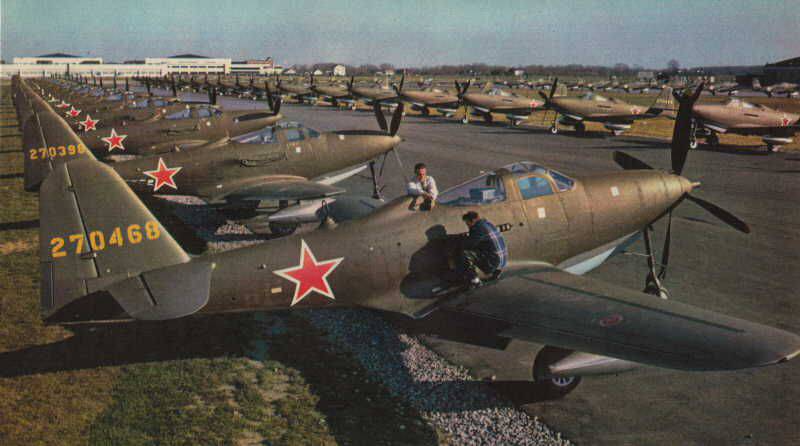
From the first hour of his acquaintance with the American fighter, Pokryshkin learned about the main shortcoming of the Cobra. Here is how he describes it: “Before leaving for the front, the navigator of the regiment was performing difficult pilotage at low altitude. The plane suddenly fell into a corkscrew. Heights for the withdrawal was not enough, and "Air Cobra" crashed into the ground. Looking at the smoking funnel, in which the wreckage of the aircraft was burning down, I thought that the Air Cobra did not forgive mistakes in piloting. This disaster confirmed the opinion of American pilots. They were afraid of the Air Cobra and reluctantly fought on it. ”
Nevertheless, the fighter liked Pokryshkin right away - a comfortable cabin and powerful armament. The main thing was to carefully study the behavior of the Cobra in the air in order to fully master the overseas plane. The Germans were a very serious adversary, but they could successfully fight P-39 and with them. For more efficient use of the American aircraft, it was sometimes necessary to use Russian ingenuity. So, on the Air Cobra it was an inconvenient location of the gun trigger. Pokryshkin proposed a simple and effective solution - he redid the descent of all weapons on an airplane into a machine gun trigger. Now when you click on it, the fighter threw a powerful portion of the lead of all calibers.
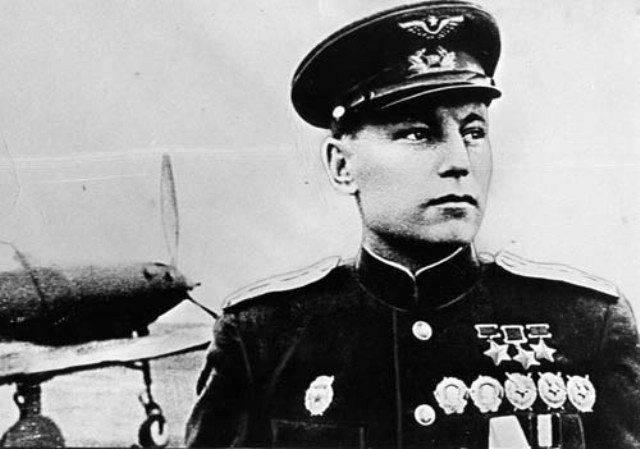
But Alexander Ivanovich Pokryshkin wrote about other machine flaws: “The Cobra did not tolerate those who leave it in the air” - when the pilot had to leave the plane, being thrown out with a parachute instead of up, often injured or even died when hitting tail. With intensive maneuvering due to high overloads, the tail plumage was deformed, jammed steering wheels. Due to the inability to quickly find out and eliminate the causes of this flaw, the pilots were temporarily barred from carrying out intensive maneuvers, which is equivalent to a ban on conducting air combat. But they were not exempt from combat work during the search for the causes of defects. And the pilots went into battle, and part of them died "not in battle, but from the unforgivable mistake of the creators of technology." Not only hastily trained wartime pilots, but also experienced pilots were broken. ”
The main part of the serial P-39Q hit the Soviet Union, and only a few hundred Aero Cobra with the letter "Q" entered service with the US Air Force. In February, the 1944 of the year, the 75 P-39Q of the 332 th Fighter Group, relocated to Italy. But their service on the Apennine Peninsula turned out to be short-lived, and after a few months “Cobras” were replaced by “Thunderbolts” P-47. Such a picture was observed everywhere, and by the end of the war the "thirty-ninth" had practically disappeared from the advanced combat units of the US Air Force. The Americans preferred the Mustangs and Thunderbolts, while the Cobras passed on to training and support units. Several dozens of P-39Qs were converted into double TR-39 training rooms. The cab continued forward, and the cadet was sitting in the bow, from which all the weapons had to be removed.
The serial production of Aero Cobra was ceased in the 1944 year, but work to improve the performance of the machine did not stop. Three P-39D decided to fly around with the experimental engine "Continental" V-1430-1, assigning them the XP-39Е index. In addition to the new engine, the aircraft had a laminar wing profile and tip ends of more square-shaped planes. All three cars differed from each other with a keel, which also, compared to the rounded tail of the Air Cobra, was performed with straightened outlines. Flying cars did not last long. In March, the XP-39E crashed. In April, it was replaced by a second XP-39E, which with the V-1710-47 engine accelerated to 621 km / h at an altitude of 6608 m. In September, the third experienced XP-39E joined the flights. On the basis of these machines were going to release a serial fighter under the symbol P-76. The military even called the order number - 4000 aircraft, but still the release of the P-76 did not take place.
However, the XP-39E tests led to the creation of an improved production version of the Air Cobra - the Kingcobra P-63 fighter. King Cobra also had a laminar wing and, with a V-1710-93 engine (1325 hp), had a maximum speed of 660 km / h. And this option was sent to the Soviet Union in large quantities - from 3300 copies of Kingbox 2400 machines flew with red stars.
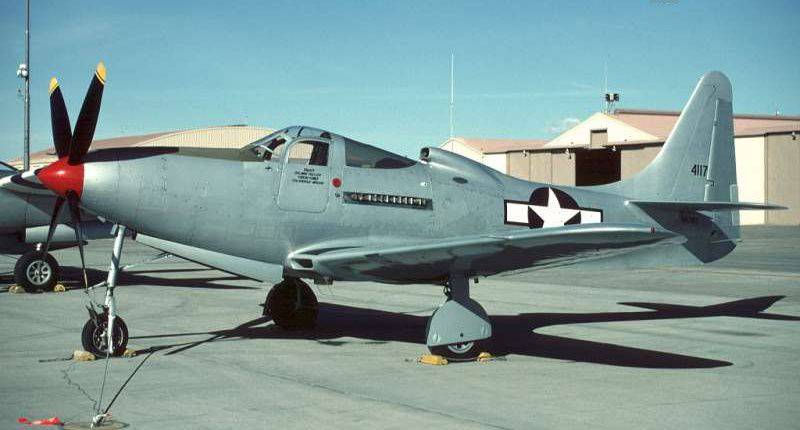
The Americans, replacing the Air Cobra with more modern fighters in the front squadrons, transferred part of the Thirty-Nine to the new allies. After the landing of the Anglo-American forces in North Africa in November 1942 in France, France joined the British coalition and American aircraft began to enter into service with her aircraft. 165 Cobra P-39M and P-39Q became part of the Free French Air Force. In 1944, the French Aerocob park has increased. The “cobras” of the first republic were actively used in combat operations in the north of Italy, supporting the allied forces from the air.
Another ally in the anti-Hitler coalition has become more in 1943 year. September 8 Italy concluded an armistice with the United States and the United Kingdom, declaring a rupture of relations with Germany. The country was essentially split into two parts. Also turned out to be separated and the Italian Air Force. Now the Allied Command was subordinate in the south about 200 Italian aircraft, but these were, as a rule, obsolete machines.
Strengthen the military aviation of the country decided to bombers "Martin" "Baltimore", fighter "Spitfire" and "Air Cobra". 75 P-39Q and 74 P-39N transferred from the 15-th Air Force US Army. The pilots recorded their first sorties in the 18 flight books of September, appearing in the skies of Albania. In the future, "Cobras" with Italian identification marks could be seen over the Mediterranean Sea and the Balkans. Their main task was to fly to ground attack, and the losses from anti-aircraft fire turned out to be significant. By May 1945, only 89 P-39 remained in the ranks, which ended their flight career in the same year as training in aviation schools.
With the end of the war, the Air Cobra and the USAF disappeared very quickly. The "thirty-ninths" France exploited the longest - the last cars flew up to 1947. Soviet "Cobras" participated in combat missions until the surrender of Germany, and then were also written off.
At the end of 1940's, the name Aerocobra continued to be mentioned quite often in American aviation magazines. But these were not the memories of veteran pilots, but reports about aviation races. In 1946, the national American air race in Cleveland won the Tex Johnson, speaking at the lightweight P-39Q. He showed an average speed of 601,73 km / h at a distance of 10 circles in 48,3 km. On the 1948 races of the year, Charles Brown on the same machine, but with a V1710-63 engine (2000 hp) from Kingcobra, overclocked one of the laps to a maximum speed of 664,64 km / h. This result remained the best for all variants of the "thirty-ninth".
The Acocobra P-39 fighter is a vivid example of those airplanes that look like a world breakthrough in their class on paper, but in fact the car leaves a completely different purpose and characteristics. Having an unusual layout, the plane had some outstanding qualities and, ultimately, turned into a good fighter-attack aircraft, who fought in many parts of the world.
Sources:
Ivanov S. P-39 Aircobra // War in the air. No. 27. C. 7-15, 18-19, 51-53. 56-57.
Ivanov S. The combat use of P-39 Aircobra // War in the air. No. 45. C. 22-27, 30-40.
Ivanov S. P-39 Aircobra. Modifications and design details // War in the air. No. 91. C. 2-11.
Kolov S. The airplane of the Bell company P-39 Aero Cobra // Wings of the Motherland. 2001. No.1. C.20-24.
Kotelnikov V. "Air Cobra". American fighter for the Stalin falcons. M .: Yauza, Eksmo, 2009. C. 5-11, 23-30, 74-78, 86-11.
Kotelnikov V. Fighters of the Second World War (1939-1945). CH 2. M .: Aviam, 1994. C. 2-3.
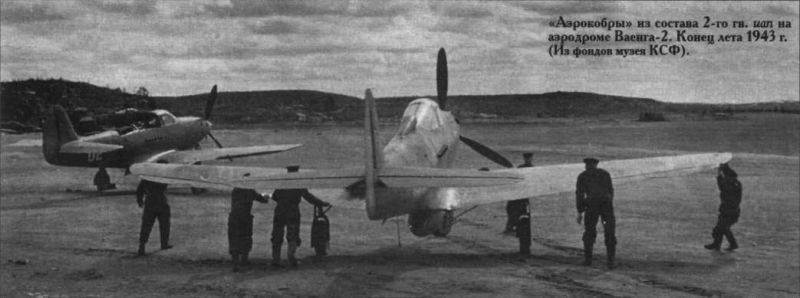
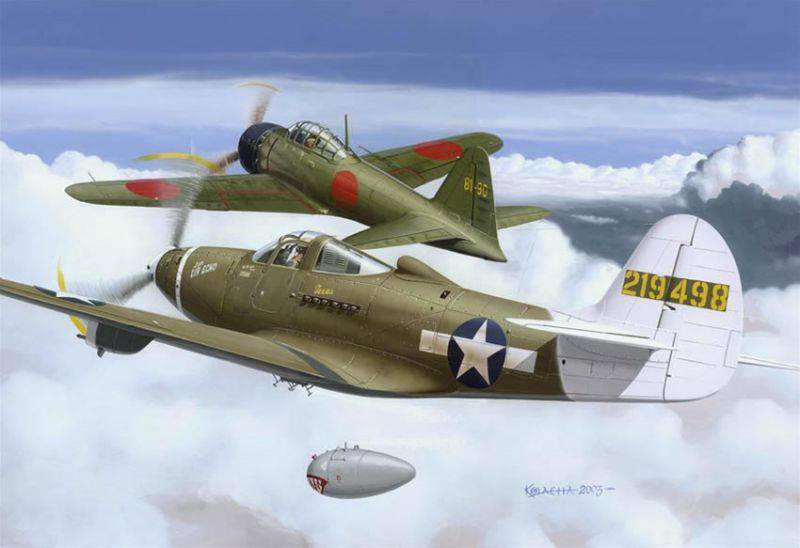
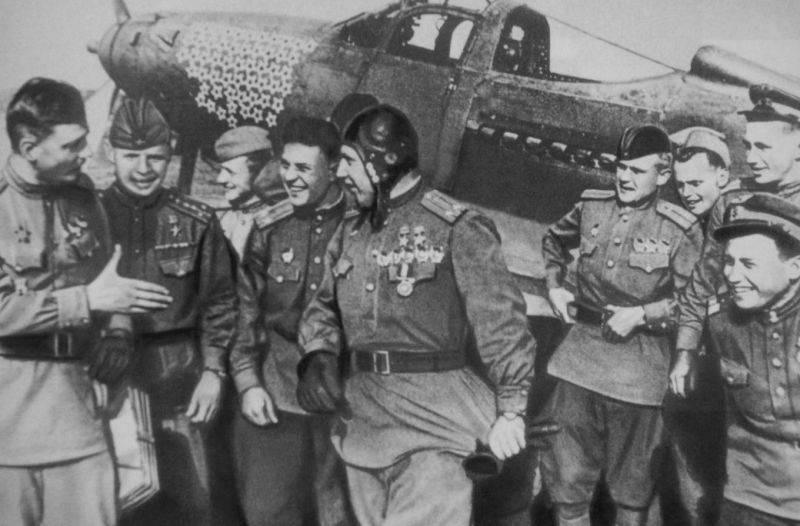
Information